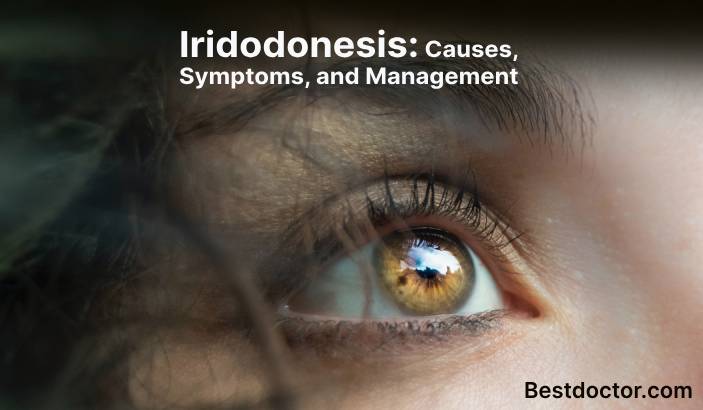Iridodonesis may not be a term that rolls off the tongue easily, but for those experiencing it, understanding this phenomenon is crucial. Let’s delve into the intriguing world of iridodonesis, exploring its causes, symptoms, potential implications, and available management options.
Unpacking Iridodonesis
Iridodonesis is a medical term that refers to an involuntary tremulous movement or fluttering of the iris—the colored part of the eye. This phenomenon can manifest as a subtle quivering or shimmering of the iris when the eye moves or changes focus. While iridodonesis is not a condition in itself, it can be associated with various underlying eye conditions and can serve as an important diagnostic clue.
Understanding the Iris
Before we dive into the specifics of iridodonesis, it’s essential to understand the role of the iris in the eye. The iris is a circular, pigmented structure located between the cornea (the clear front of the eye) and the lens. It controls the amount of light entering the eye by adjusting the size of the pupil—the black center of the eye. The iris contains muscles that regulate pupil size, responding to changes in light intensity and visual focus.
Causes of Iridodonesis
Iridodonesis can occur for various reasons, and its underlying causes may include:
- Lens Instability: One of the most common causes of iridodonesis is a condition known as lens subluxation or lens dislocation. In this condition, the eye’s natural lens, which is held in place by tiny fibers called zonules, becomes unstable, causing the lens to move or tilt. This movement can transmit to the iris, leading to iridodonesis.
- Trauma: Eye injuries or trauma, such as a blow to the eye, can disrupt the normal positioning of the lens and iris, potentially causing iridodonesis.
- Eye Surgery: Some eye surgeries, particularly those involving the removal of the lens (such as cataract surgery), can result in iridodonesis as the iris may lose support from the lens.
- Eye Disorders: Certain eye conditions, such as Marfan syndrome or homocystinuria, can be associated with structural abnormalities in the eye, including iridodonesis.
Recognizing Symptoms
Iridodonesis can manifest differently from person to person, and its symptoms may include:
- Iris Trembling: The most noticeable symptom is the tremulous or quivering movement of the iris, particularly when the eye moves or shifts focus.
- Blurred Vision: Some individuals with iridodonesis may experience blurred vision or visual disturbances, especially if the movement of the iris affects the alignment of the visual axis.
Diagnosis and Implications
Diagnosing iridodonesis typically involves a comprehensive eye examination by an ophthalmologist. The diagnosis will not only identify the presence of iridodonesis but also determine its underlying cause.
Iridodonesis itself is not a condition that requires treatment. Instead, the focus is on addressing the underlying cause, whether it’s lens instability, trauma, or an eye disorder. Treatment options may include:
- Surgical Intervention: In cases of severe lens instability or dislocation, surgical procedures to reposition or stabilize the lens may be necessary.
- Corrective Lenses: Prescription eyeglasses or contact lenses can help improve vision and reduce visual disturbances caused by iridodonesis.
- Management of Underlying Conditions: If iridodonesis is associated with an underlying systemic condition (e.g., Marfan syndrome), managing that condition is essential.
Conclusion
Iridodonesis, while not a condition itself, can serve as a visual indicator of underlying eye issues that require attention. Recognizing the subtle quivering of the iris and understanding its potential causes can be crucial for timely diagnosis and appropriate management.
If you or someone you know experiences iridodonesis or related visual disturbances, consulting an ophthalmologist is recommended. With proper diagnosis and treatment, individuals can address the underlying issues and maintain good eye health and vision. While iridodonesis may seem perplexing, the field of ophthalmology offers valuable insights and solutions to ensure the well-being of those affected by this phenomenon.







